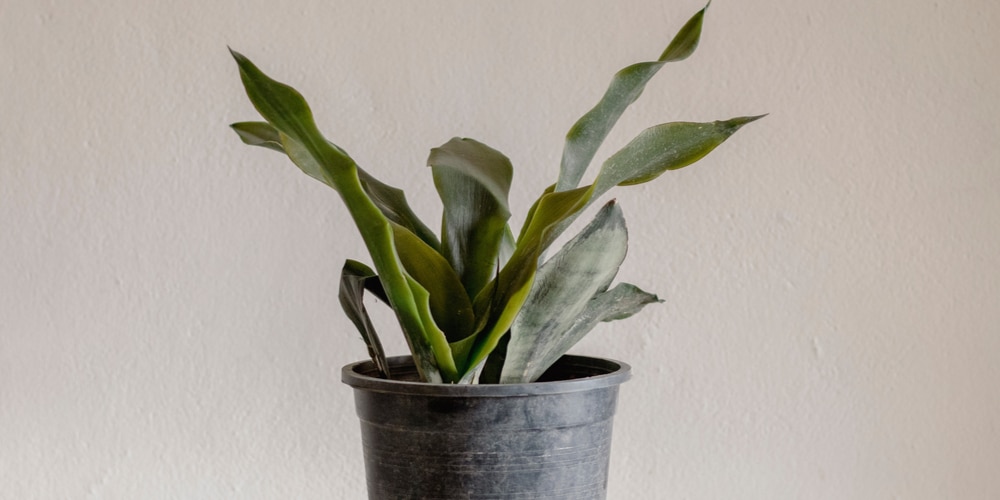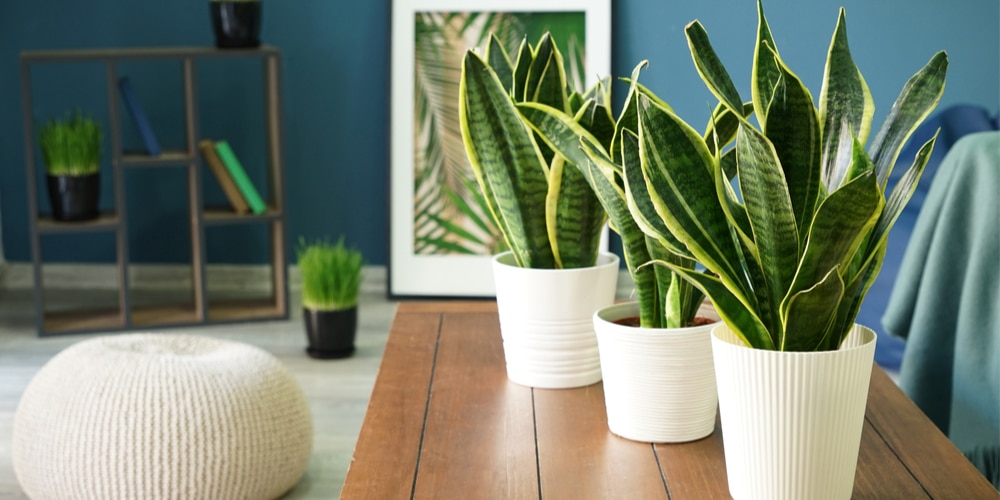Snake plants or Sansevieria are popular houseplants and an excellent choice for beginners. They are easy to care for and highly tolerant to various conditions; they may even appear impossible to kill. If you are worried about your ability to water your plants daily, you can rest at ease as they will be fine even if you miss a day or two. On top of that, they are stunning plants helping you freshen up the air in any room or space as well as they look.
That does not mean you are free of all kinds of care because if there is one issue that may affect that succulent fresh look of their leaves, it is if you let them become severely root-bound.
What is to be root bound?
Root bound refers to the pot’s restriction on a plant’s root. Since the roots cannot spread freely all over, they curl up and get tangled, circling and creating a dense mass of roots. Left unchecked, the roots soon form a hard soilless and compact ball resembling the shape of the container holding the plant. As a result, the plant’s health suffers from a lack of nutrients, water, and oxygen. The plant’s leaves will wilt and turn yellow if they lack these essential resources. In some instances, the root ball created may bust the pot holding the plant as the roots look for an exit and further room.
Do snake plants like to be root bound?
Yes, snake plants are among a group of plants that will thrive when they are slightly root-bound. Other similar plants include aloe vera, spider plant, the jade plant, and the umbrella tree. Snake plants require some stress like root binding to quickly develop pups. Snake plants also take a long time to mature, so it may take a year or two for root bound to negatively affect their growth.
However, severe cases of root binding will affect the plants’ health, and you should address them whenever the plant shows such symptoms.
What causes root bounding?
Two things usually happen for a snake plant to be root bound. Either you started with a small pot in the first place, or the plant and its new buds have outgrown the pot. Snake plants propagate by growing plantlets/pups from the mother plant. They grow as thick rhizomes from the main plant and then grow many vertical plantlets. Each then develops its root system around the mother, and that is how the roots get to easily fill up a container. If you started with a small container, a couple of buds would quickly cause extreme root-bound. Even with a large container, you must check periodically.
Should your plant show rootbound symptoms, you can address the issue by dividing the plant, root pruning the snake plant, or repotting it to a bigger container. The latter option is often feasible, and below is a guide on how to do it.
Signs that your snake plant is root bound
You can tell your snake plant needs repotting if you spot the following;
1. Yellowing of the leaves
2. Stunted growth
3. Leaves wilting or curing
4. Roots appearing above the soil’s surface,
5. Cracks in the pot
6. Roots coming through drainage holes
Repotting guide for snake plants
1. Soil preparation
Soil is the foundation for a healthy plant. You cannot rely on garden soil since it may contain pests, diseases, and weeds, which will affect the healthy growth of your plants. More crucially, garden soil is too heavy for pots, compacts easily, and has poor drainage, making it hold on to too much water.
The best approach is to get a houseplant potting mix from a local nursery. You can also mix the snake plants’ soil by mixing half river sand with a standard potting mix of high quality. Snake plants like coarse and well-draining soils since their roots are susceptible to root rot if the soils hold too much water.
2. Uproot the plant from the current pot
Turn the pot on the side or uprise down. Knock on the sides or squeeze them where possible to loosen the soil. You can also use a long serrated knife and run it around the pot’s perimeter to separate the soil from the root ball. Gently pull the plant from the pot and shake off any soil clinging to the plant’s root as you want to give it a fresh start. It usually helps to not water the plant for a couple of days before repotting to make the removal easier. Also, should you notice any bacteria or fungi on the roots, wash the roots with water to remove any residue.
3. Cut off any mature pups.
With the roots visible, you should spot any pups growing as offshoots of the mother plant. While you may want to leave them if they are only a few, they will still grow in no time, necessitating another repotting much sooner than planned. Removing them gives you more time and an opportunity to grow more snake plants. However, you should ensure the pups have enough roots to support themselves away from the mother plant. Use a sharp knife and make clean cuts for the various pups, which you will grow in different pots.
4. Fill the pot with soil
You should find an ideal plot larger than the first one but not too large. The plant should not be twice the size of the pot you are placing it in, so
one or two sizes up is ideal. Too large a pot will retain plenty of water which will cause root rot affecting your plants’ health. You can start filling the plant with several pebbles at the bottom to prevent the soil from falling off, and then fill the pot up to about 1/3 with the soil mixture. Avoid compacting the soil as you want it to be as airy and light as possible.
5. Time to replant
Place the plant at the center of the pot on top of the soil you already laid, then holding it in place, add extra soil covering the roots and continue filling until the soil is just a few inches from the top of the plant. Be careful to avoid covering the plant’s crown. Once you are done, gently push the topsoil layer down to secure the plant and remove any large air pockets.
Do Snake Plants Like to Be Root Bound?: Conclusion
So yes, snake plants do like to be root bound, but you should not let this condition get to extreme levels. It is advisable to conduct repotting every two to three years to prevent the extreme cases of root bound and keep maintain your plant’s health. You also get a chance to replenish your snake plants with healthy and nutritious soil while adding the number of new plants by dividing the pups.
Related Article: Snake Plant Watering Guide



